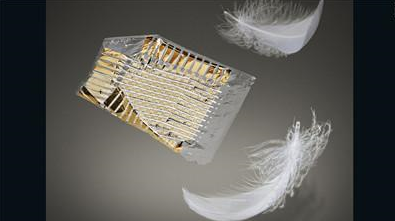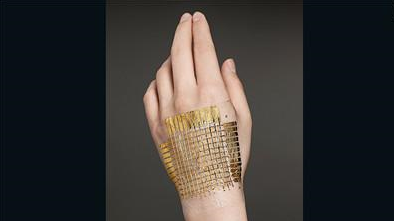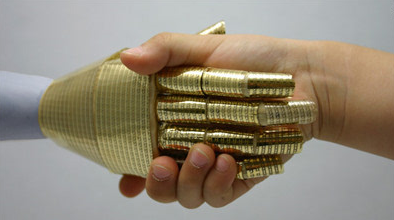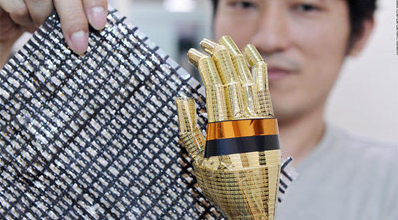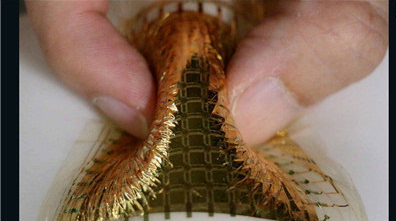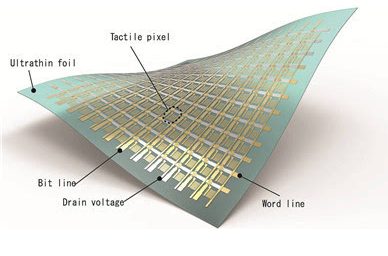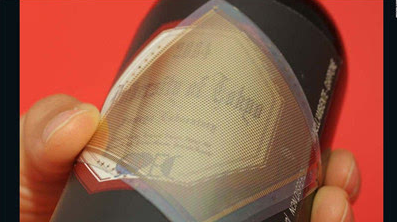Japanese scientists develop bionic skin that can reach the tumor site
Release date: 2016-06-08 The skin is the largest organ in the human body and a wall that connects the brain to the outside world. Imagine what it would be like if the skin could convey the inside of the body. It tells the surgeon to give an alarm when our body is about to get sick, and even diagnose the disease of another person by touch alone. Tokyo University scientist Takao Someya is turning this scene into reality. Someya invented a bionic or esthetic e-skin that would give humanity a new sense of spiritual sensitivity. This electronic skin is as light as a feather, but it is extremely difficult to destroy. One day, it will bring great changes to the medical field. The future of healthcare? Someya is working hard for a future: doctors wear custom-made gloves made with his technique to detect tumors in women's breasts by touch. This can reduce the need to refer to and scan the body, as well as detect tumors as early as possible – such as during routine physical examinations. Huge possibility These wearable bionic skin can be applied to us or just sewn to the clothes. They can be used to monitor vital signs in the body and even to monitor the state of our heart to help doctors predict the risk of heart attack. Someya plans to complete the development of this technology in the next few years. However, his vision begins with robots – not humans. “The picture I imagine is that a robot can detect the emotions of the other person by shaking hands with people—such as enthusiasm or sadness.†He believes that designing e-skin for robots can create outside the already saturated commercial electronics field. A new research trend, the commercial electronics industry at that time either focused on developing micro-robots or making machines move faster. But this is 15 years ago. In today's view, with the technology lead he achieved, the picture he imagined at the time was not so far away. Exploring his thoughts The professor of electrical engineering said: "In the early 21st century, I just started research. At that time, flexible electronic materials were just emerging, but most people wanted to develop electronic paper. I wanted to do something other than mainstream. †Artificial skin has long been there, but they are not perfect enough. Artificial skins that detect temperature and pressure are not soft enough, just a bunch of rigid electronic materials with certain functions. And their cost is too expensive, and it costs too much to cover the number of a robotic limb. Someya wants to break all these limitations, but it's not that simple. Tactile similar to humans Human skin is very complicated and it is not easy to imitate it. If the skin of a normal adult is completely spread out, it has an area of ​​about 20 square feet and contains 2 million pain receptors, which is staggering. Someya knows that by plugging in 2 million sensors into a single driver circuit, any electronic skin loses its softness. In 2003, he began to replace hard-state electronic materials, such as silica gel, with flexible, organic materials such as dinaphtho-dithiophene (DNTT), a material commonly used to make security foils on paper money. In the beginning, he chose to use a soft, biocompatible organic semiconductor to connect the sensor to detect pressure and 30-80 degrees. He then laid the material into an "active matrix" grid (which is often used to make LCD screens), giving each sensor its own exact coordinates in the grid. This avoids the need to entangle the wires. Then he came up with a brilliant idea. Someya's colleagues placed the sensors on rigid surfaces, such as ultra-thin glass and steel foil, while Someya's team chose to put them on plastic film. The plastic is not only unexpectedly strong, but also cheap, and it won't break on the metal fingers of the robot. This is the world's first ultra-thin and flexible electronic skin. Extension of imagination Despite these results, Someya's research faces a major problem – the electronic skin cannot stretch. At the same time, a team led by Professor Sergey Wackner in Princeton University in the United States has begun to use rubber as a surface material to create stretchable electronic skin. Someya's team quickly learned and began printing their organic sensor grids on plastic film by inkjet printing and then compressing it onto a pre-stretched rubber substrate. When the rubber is loosened, the plastic film shrinks back and has a grain of texture - just like real skin - and the film stretches out when the rubber is stretched again. This material fits into the groove of the robot joint, just like attaching a polyethylene film to its arm. His electronic grid can be stretched up to 250%, then wrinkled like a crepe paper, and dropped from a height of one meter will not break. This may be counterintuitive, but the thinner the plastic electronic skin, the stronger they will be. Between 2005 and 2013, Someya and his team continued to manufacture thinner and thinner plastic films, and the finished plastic film was only 1 micron thick, which is one tenth of the thickness of ordinary plastic wrap. Its sensitivity can be compared with human skin. Someya said: "At this point, we realized that electronic skin should not be used only on robots. We began to put ultra-thin plastic film on the surface of human skin." Ultra-sensitive humans will appear In 2014, the Someya team put an electronic skin on the heart of a mouse for up to three hours in one operation. This smart skin shows the ECG signal of the mouse and can detect the state of the heart defect in the mouse. Someya said: "This technology may be used in human medicine in the future." Using electronic skin will put less stress on the heart than traditional electrodes. Professor Bao Zhenan from the Department of Chemical Engineering at Stanford University is developing materials that can biodegrade, which means that the electronic skin placed in the body will not need to be removed. Professor Bao said: "Portable medical devices can measure ECG, the size of specific organs and their changes over time." In 2015, Bao's team published a paper saying that ultrasonic proximity sensors have been tested on robots to prevent them from repelling with objects, and this technique can also be used to detect small in vivo tumors that cannot be diagnosed by touch. . Earlier this year, Someya's team released an electronic skin that monitors oxygen levels. Its index can be displayed in red, green or blue by microelectronic elements. The ultra-thin electronic skin on your hands can be used as an electronic display while in motion. It can also be used for a variety of commercial purposes, such as playback media. Someya's ultimate goal is that such electronic skin can be used in surgery to detect oxygen levels in human organs. However, another use of electronic skin can enhance the function of today's surgical prosthetics. If the smart skin is placed on the person's upper arm, it can detect the brain waves and then send the signal to the prosthesis to let it complete the corresponding action. Smart skin has unlimited possibilities, not only in the medical field, but also in gaming competition and personal health monitoring. Beyond drugs In November last year, Someya invited Ichiro Amimori to establish a derivative company for the projects he completed. In 2016, at the world's largest technology forum CES, Amimori released a dynamic sensor kit for virtual reality gaming. The kit has a circuit panel inside the fabric that contains sensors that monitor movement, breathing and body temperature, and it can even be machine washed. His team has also developed a dynamic sensor kit for babies that allows parents to monitor their child's every move, even when they are not at home. Amimori said: "Now, these products are still in the model stage, there is still a little futuristic. But, it is becoming a reality. We have already planned to bring Someya's technology to every step of the real world." Someya said that since the advent of his breakthrough invention, the electronic skin field has become popular, and in order to make it wearable, various teams around the world are studying how to break through the remaining problems. However, his technological dreams have extended far and wide, and now he has returned to his starting point - connecting humans through technology. He said: "Our ultimate goal, our dream is to make human and robots live in harmony by making full use of soft electronic technology. Humans know more about robots, and robots are closer to humans." Source: There is a way Body Lotion,Vaseline Lotion,Body Moisturizer,Body Cream Guangzhou Lingxue Cosmetics Co., Ltd , https://www.gzlxgj188.com